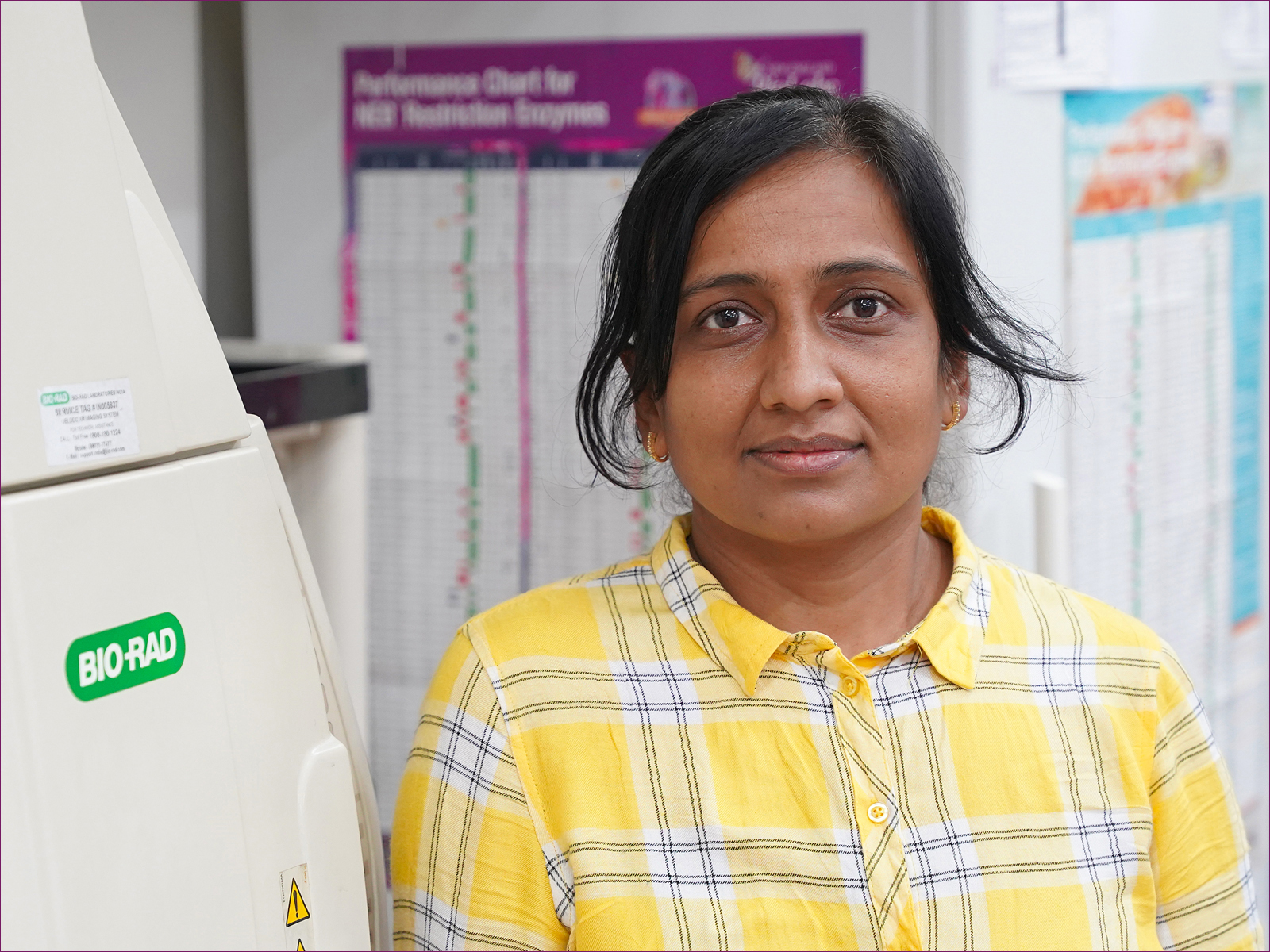Women Scientists in IISc – Dr Shovamayee Maharana

Photo Credits – Mr. Haridasan
Dr Shovamayee Maharana is an Assistant Professor in the Department of Microbiology and Cell Biology. She joined IISc in 2021. Her areas of research are cell biology, neurodegenerative diseases and cellular biophysics. She did her PhD at the National Centre of Biological Sciences, India and postdoc at the Max Planck Institute of Molecular Cell Biology and Genetics, Germany, and the Biotechnology Center for TU Dresden, Germany.
- When did you first realise that you wanted to be a scientist?
I did my master’s dissertation with Prof SC Lakhotia, who has discovered a novel RNA based substructure in Drosophila cells. My master’s course opened my eyes to the unknown and unseen realm of cellular organisation. And after my master’s at the Banares Hindu University, when I was thinking about what to do next that I will really love, I thought of trying my hand in research and then I decided to do a PhD.
- What attracted you to apply to and join IISc?
IISc has departments for all the possible scientific fields on the campus. My goal of understanding cellular compartmentalisation will require not just biology but also chemistry, physics, and computational science. So, I could not imagine any other place better than IISc in India to be able to address this question.
- What will your research at IISc focus on?
My lab uses single-cell manipulation, quantitative fluorescence microscopy, in vitro purification experiments and biochemistry to understand the formation and function of RNA and protein-enriched subcellular bodies.
- Why did you choose this area of research?
Cells must carry out many biochemical reactions in parallel, in the molecularly crowded milieu of the cytosol to sustain life. And it always fascinated me how cells which are teeming with molecules can carry out these reactions. Research in the last 10 years has shown that proteins and nucleic acids have the inherent ability to assemble to form biomolecular condensates which might influence the reactions carried out by them. Furthermore, in diseases like neurodegeneration and in conditions of ageing, these condensates get altered. I chose this area of research as it not only satisfies my curiosity, but I also believe my training in the latest quantitative and super-resolution fluorescence microscopy techniques will make me a significant contributor in this upcoming area of biology. This research question is also highly interdisciplinary which matches my aptitude for learning and interacting with diverse scientists. Lastly, it really pumps me up to imagine that one day, we can understand the inner molecular working of the cells by not only understanding the molecules individually, but being able to explain the ensemble activity of molecules where they work as dynamic teams to carry out tens of different biochemical reactions.
- What are the big unresolved questions in your field?
The most important question in the field is how cells manage to form different condensates with a similar set of molecular interactions that themselves are non-specific. Further, if LLPS is important for the function of the molecules.
- What is the most important advice you got that you think has helped you in your career?
I listen to a lot of TED talks in my free time. And one very important piece of advice which I got from these talks which has helped me in my career is: Premortem. It’s a technique where you think ahead of a problem, and prepare for the possible ways it can go wrong and you prepare for it. I always plan my career 4-5 years ahead in time. When I joined PhD, I had already planned that I will pursue a career in academics and had decided to learn techniques that will help me in research and building a career in academics. I also had a backup plan in case I did not secure a good postdoc. At the beginning of my postdoc, I imagined what can go wrong if I start my lab: lack of funding, lack of good support system at the institute, lack of specialised manpower and so on. So, I kept my question of interest simple which can be studied with simpler resources.
- If you had any mentors or role models in science, who were they and what do you think you’ve learned most from them?
I have had good luck in having a few mentors and role models in science in my life. From time to time, I think about these mentors and their styles of working which gives me the insight to help with my own problems. From my MSc mentor Prof SC Lakhotia, I learned that difficult situations are a good source of creativity. Prof GV Shivashankar, my PhD mentor, helped me appreciate the importance of biophysics in biological problems and the importance of change in enhancing creativity. My postdoc mentor, Prof Simon Alberti, taught me to be calm and to visualise the problem from new angles. And from Prof Anthony Hyman, my other postdoc mentor, I learned how to be efficient in publishing, not to fear talking to people having a different perspective in science as that can teach us a lot.
- What is the most fulfilling thing about a life in science?
Science is a slow and creative process. It’s like planting a seed which blooms, gives fruits in a few years. Not only do I enjoy the fruits but also the whole process of seeing them grow. In research, along with the project, we can also see how both the students and guide, the faculty, become wiser and more mature as a scientist. In my view, this is the most fulfilling thing in science. I also love the surprise of stumbling onto unknown things, being able to design clever experiments and striving as a team of like-minded individuals to be able to discover something novel.
Click here for some of the Other Women in Science




